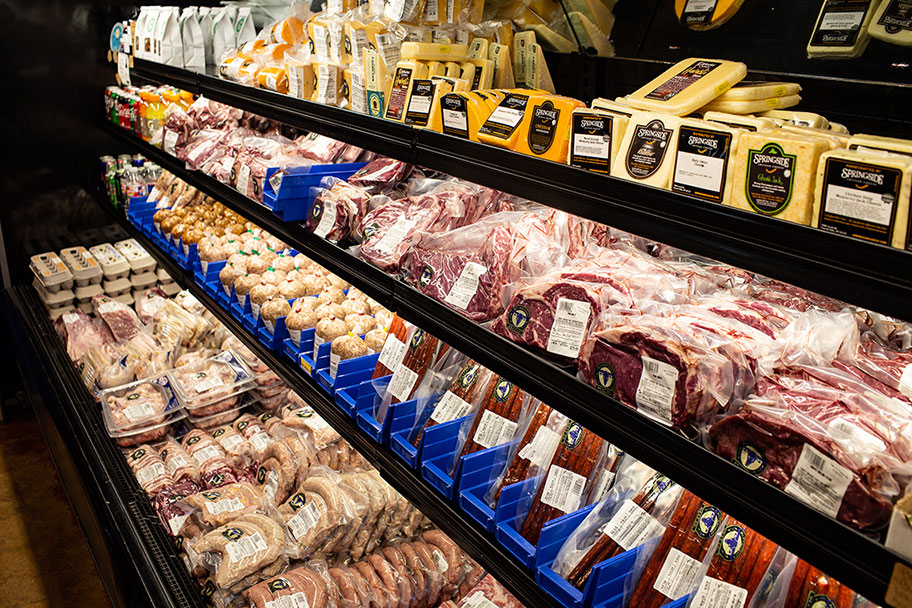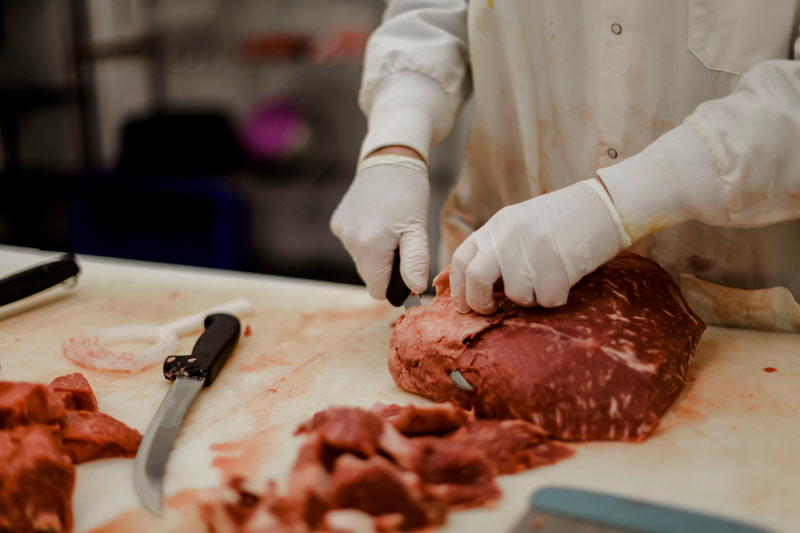Bagley Farms Meat Market: Your Premier Selection for Fresh Local Meats
Bagley Farms Meat Market: Your Premier Selection for Fresh Local Meats
Blog Article
Your Comprehensive Source for Professional Tips on Navigating the Meat Market Scene and Making Enlightened Purchases
Navigating the globe of meat getting can typically feel like a complicated maze, with different cuts, grades, and labels adding layers of details to the decision-making process. For those looking for to make enlightened selections and raise their culinary experiences, comprehending the nuances of the meat market scene is critical. From analyzing the difference between prime and selection cuts to deciphering the secrets behind different accreditations, a wealth of professional tips waits for those happy to untangle the secrets of the butcher's domain name. By grasping the art of picking fresh, high quality meat and discovering to involve effectively with butchers, individuals can not only enhance the flavors on their plate however additionally make certain choices that straighten with their values and choices.
Comprehending Different Cuts and Qualities
When it involves purchasing meat, recognizing the differences in between numerous cuts and grades is vital for making educated selections at the market. The cut of meat describes the particular muscular tissue team where the meat is sourced, while the grade is a quality designation based upon variables like marbling, tenderness, and maturation of the animal. Prime grade meats have the highest degree of marbling, making them tender, juicy, and savory, however they also have a tendency to be much more pricey. Selection quality meats are somewhat leaner with less marbling yet still offer top quality for a lower price factor. Select quality meats have the least marbling, making them leaner yet potentially much less tender. It's crucial to think about the food preparation approach when choosing a cut and grade of meat-- as an example, well-marbled cuts like ribeye are wonderful for barbecuing, while leaner cuts like sirloin may be much better fit for roasting or braising. By comprehending the distinctions between cuts and grades, consumers can make even more educated choices when purchasing meat.
Choosing Quality and fresh Meat
To guarantee optimal taste and safety in your dishes, it is important to thoroughly select fresh and quality meat when buying at the marketplace. When picking fresh meat, seek cuts that have a dynamic shade, firm texture, and are moist but not slimy. The color of the meat must specify to the type you are acquiring; for instance, beef should have an intense red shade, while pork ought to be a lot more pinkish. Stay clear of meat with any type of off-smells, discoloration, or extreme liquid in the packaging, as these can be indicators of putridity.
In addition to appearance, take into consideration the resource of the meat. Go with products from credible suppliers known for their premium requirements. Organic, grass-fed, or pasture-raised alternatives may additionally indicate better quality meat. Looking for appropriate labeling, such as USDA grades or certifications, can additionally guarantee you of the meat's high quality and safety. By being vigilant in your option procedure, you can delight in risk-free and scrumptious dishes made from fresh, top quality meat.
Decoding Labels and Certifications
Comprehending the tags and certifications on meat products is crucial for making educated choices about the quality and origin of the meat you purchase. When browsing the meat market scene, it is very important to search for tags such as "USDA Licensed Organic," which indicates that the meat was produced adhering to strict organic requirements without the use of artificial chemicals, antibiotics, or hormones. One more key tag to expect is "Grass-Fed," which indicates the pets were fed a diet plan largely including yard or forage. This label usually indicates a leaner item special info with greater degrees of omega-3 fats.


Accreditations like "Animal Welfare Accepted" or "Certified Humane" symbolize that the pets were raised in humane problems, with accessibility to outdoor spaces and ethical therapy. On the other hand, "Non-GMO Job Verified" shows that the meat originates from animals that were not fed genetically modified organisms. By recognizing these labels and accreditations, customers can make even more sustainable and honest choices when acquiring meat items.
Engaging With Butchers for Guidance
Making notified selections concerning the meat you get can be further enhanced by seeking support from experienced butchers who have important expertise regarding different cuts, top quality, and sourcing practices. Butchers are competent professionals who can supply understandings right into the very best cuts of meat for specific meals, recommend alternate options based on availability or budget, and offer suggestions on proper handling and storage to take full advantage of quality and taste.
Engaging with butchers enables consumers to ask questions about the source of the meat, consisting of whether it is locally sourced, natural, grass-fed, or sustainably increased. By cultivating a connection with a trusted butcher, customers can acquire a much deeper understanding of the meat they buy, making sure that it lines up with their worths and choices.
Moreover, butchers can share cooking tips, dish ideas, and also butcher unique cuts to fulfill private choices. Their expertise prolongs past just offering meat; they can aid in meal preparation, section sizing, and offer suggestions on corresponding components to develop all-round and delicious meals - Bagley Farms Meat Market. By leveraging the knowledge and experience of butchers, consumers can make even more educated decisions when navigating the meat market scene

Optimizing Worth and Budgeting
When thinking about making best use of value and budgeting in the meat market, it is crucial to analyze the expense per offering and discover economical cuts that still use great taste and quality. By recognizing the price per serving, customers can make educated choices about which cuts of meat offer the best worth for their budget plan.
An additional strategy for budget-conscious consumers is to make use of sales, discount rates, or bulk click purchasing alternatives. Getting wholesale and freezing sections for later usage can help minimize total prices per offering. It is also helpful to develop a connection with local butchers or meat suppliers, as they may provide unique deals or discounts to dedicated clients. By being mindful of price, checking out alternative cuts, and leveraging discounts, consumers can extend their meat spending plan without sacrificing top quality.
Conclusion
In conclusion, understanding the numerous cuts and qualities of meat, picking fresh and high quality products, decoding tags and accreditations, looking for guidance from butchers, and making the most of worth and budgeting are essential steps for browsing the meat market scene and making enlightened acquisitions. Bagley Farms Meat Market. By adhering to these expert ideas, customers can make educated choices when purchasing meat and guarantee they are obtaining the most effective value for their money
When it comes to purchasing meat, recognizing the differences between various cuts and qualities is vital for making notified choices at the market. The cut of meat refers to the certain muscular tissue group from which the meat is sourced, while the grade is a top quality designation based on variables like marbling, inflammation, and maturation of the basics animal. It's crucial to think about the cooking method when picking a cut and quality of meat-- for instance, well-marbled cuts like ribeye are fantastic for barbecuing, while leaner cuts like sirloin might be better matched for toasting or braising.Understanding the labels and accreditations on meat products is essential for making notified choices concerning the quality and beginning of the meat you purchase. When navigating the meat market scene, it's crucial to look for tags such as "USDA Qualified Organic," which shows that the meat was created following rigorous organic criteria without the use of artificial chemicals, antibiotics, or hormones.
Report this page